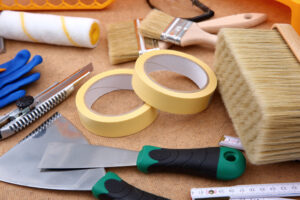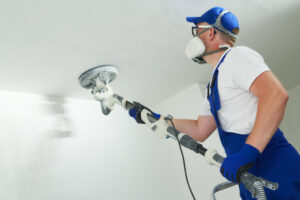Choices you make regarding painting and decorating can help keep your home dry and free of damp in our wet, temperate climate. In our haste to banish the chances of damp, we sometimes inadvertently make dampness more likely to occur by creating conditions for condensation.
Condensation is one of the most significant causes of damp within properties. It occurs as the result of warm moisture-laden air contacting a cold surface such as masonry, window glass or ceramic tiles.
To avoid condensation on the inside, moisture must be able to pass through the walls to the outside. A breathable building does not mean mean a draughty building, but one where construction fabric and decorative finishes allow the heat transfer process to occur. Problems arise when the building has been altered in such a way that this natural wicking process cannot happen.
Whether building from scratch or renovating an existing structure, give some thought to how it is going to be enabled to breathe. Be assured that by making your building breathable, you will not be increasing heat loss through walls or draughts. You will, however:
- Reduce likelihood of condensation
- Enable heat to flow around the whole structure
- Remove opportunities for dampness to occur
- Keep air flowing in and out of the building
- Create a healthy environment for users
Factors contributing to condensation within a building
| Steam from baths and showers unable to escape | |
| Drying damp washing on radiators | |
| Insufficient ventilation and space around domestic appliances | |
| Use of non-porous decorative finishes | |
| Exterior finishes applied to walls | |
| Poor room ventilation | |
| Rubber backed carpets |





